Flower Glossary is reader-supported. When you buy through links on our site, we may earn an affiliate commission.
Sunflowers hold a prominent place in fields and gardens across the world, as they have for centuries. In fact, archeologists have found traces of the plants at sites dated around 3,000 B.C. Why have civilizations throughout the centuries and across the globe learned how to grow sunflowers?
Table of Contents
Sunflowers Paintings & History
We know that Native Americans used sunflowers as a source of fiber and oil. They chewed the seeds and used the flowers and stems for medicine. Spanish and European colonists in the 1500s prized them for their beauty, and for their oil, and brought them back to their home countries.
By the early 1800s, sunflower oil was commercially manufactured, and by the late 1800s, Vincent Van Gogh’s series of sunflower paintings were becoming wildly popular. Soon sunflowers were planted largely for their beauty.
During this time, Russia continued using sunflowers for their oil and began the process of cross-breeding them for disease resistance. This has led to the more than 70 species of sunflowers available today.
With all that in mind, the reasons for growing sunflowers in your garden remain largely the same. They’re still grown for their beauty and their health benefits. No matter the reason you’re thinking of planting sunflowers, we’re here to help you sort through the types of sunflowers, when to plant them, how to care for them, and much more.
5 Best Types of Sunflowers
There are more than 70 species of sunflowers, growing from 3 feet to 14 feet tall, but there are several distinct characteristics between them. The heads of sunflowers are known to follow the sun, drinking in its rays throughout the day, no matter its position. These brilliant flowers will also suck the earth dry of water, so they’ll need plenty of it for a healthy bloom.
Sunflowers are also characterized by their giant centers where several varieties hold their delicious seeds. Interestingly, those big centers make the head of a sunflower look like one giant flower, when in fact, the flower head holds thousands of little blooms.
There are many beautiful sunflower varieties, and the following are just a few of the best for home gardening.
Sundance Kid Sunflower
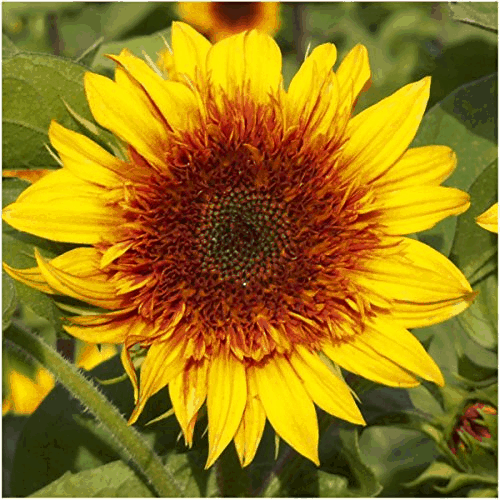
The Sundance Kid is one of the first dwarf varieties. These dwarf sunflowers grow about knee-high and their flowers longer than most sunflowers. This makes them an excellent choice for brightening a home garden. The petals are a brilliant and iconic yellow, and the center is golden orange.
Terracotta Sunflower
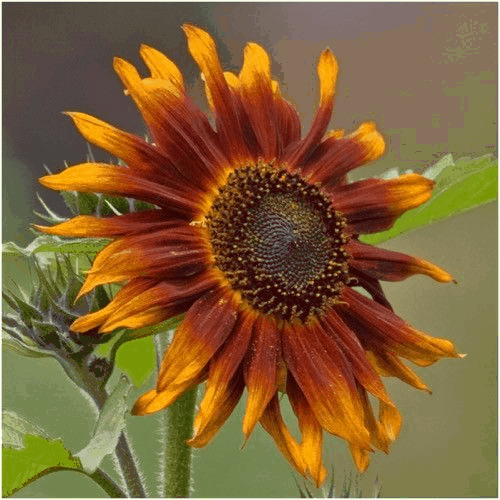
The unique color of these sunflowers isn’t very common, but they are beautiful. In fact, there are also red sunflowers (Moulin Rouge and Chianti Sunflowers). The Terracotta sunflower is one of the most brilliantly colored varieties, matching the appearance of old bricks or a terracotta pot. They have very dark centers and hints of gold and brown. This variety can grow between four and six feet tall, so consider this before planting.
Giant Sungold Sunflower
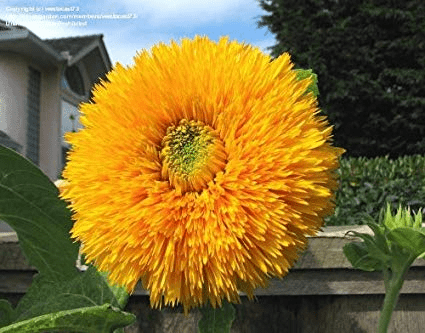
Giant Sungolds look much like Teddy Bear Sunflowers. Both feature dense layers of petals that make the flower look fluffy, and the two varieties can be mistaken for one another. However, the Giant Sungold has a few prominent distinctions. Its head is much larger and deeper and its stalk much taller (up to six feet). It produces giant fluffy plants that will make a statement in any garden. And, because this variety is a perennial, these low maintenance sunflowers will bloom longer and come back year after year.
Giant Edible Sunzilla Sunflower
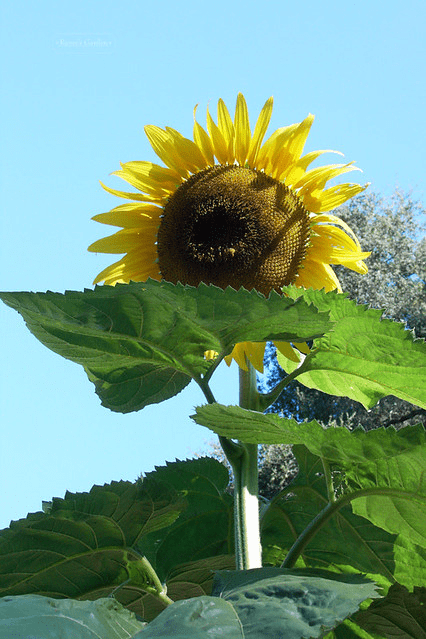
While this hybrid variety sunflower can grow up to sixteen feet tall, it should still be considered suitable for home gardens. It is strong and wind-resistant, with bright yellow petals and a wide head that produces well-sized seeds. Growing something this beautiful is even better when it also produces something you can eat.
Suntastic Yellow Sunflower
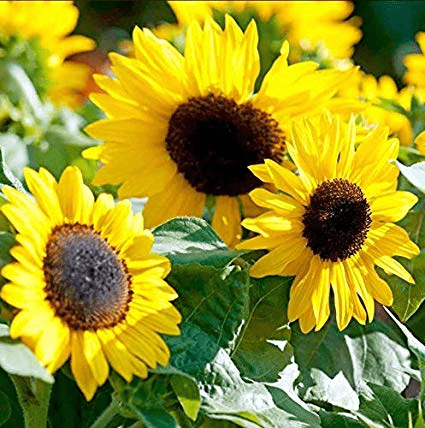
Suntastic Yellow is another dwarf sunflower that only grows to about 20 inches tall. This makes them a great choice for the garden or a pot. Their appearance might be more familiar to us than other varieties since they feature bright golden petals and a dark center. These are likely close to what we imagine when we hear the word sunflower.
How To Plant Sunflowers
Depending on the variety of sunflower, you may have either an annual or perennial. This will change their growing season and care. Always look up the planting and care information for any plant you put in your garden. This said, there are similarities across the sunflower varieties that help inform us of general care and planting.
Sunflowers enjoy a lot of sun, and they need it all day long in order to flower well. They also need plenty of room, since they will take all of the water from the soil and surrounding plants if they are too close.
Growing sunflowers from seed:
- Plant sunflower seeds at least 6 inches apart from each other and other plants to give them plenty of room
- Place seeds 1-2 inches deep
- Cover and keep watered. Seeds will sprout within 10 days
- Thin plants to around 2 feet apart once the first true leaves appear
- Within 120 days, the sunflowers will mature. You can stagger planting over the next six weeks to enjoy the blooms for longer
Tips for planting sunflowers:
- Wait to plant until the soil is between 55 and 60 degrees
- Keep them away from potatoes and pole beans since they release toxins that stop the growth of these vegetables
- Apply a little fertilizer to the soil to help the sunflowers grow stronger
- Though they are strong, their stalks are generally tall. Place sunflowers along the side of the house or against a fence for more protection
- Soil with organic matter, manure, or compost materials is better for sunflowers. They are heavy feeders and rely on nutrient-rich soil
- Sunflowers do better in well dug, loose soil that is well-drained to allow their roots to stretch out
Growing Sunflowers in Pots:
- Pick a variety that won’t grow too tall and doesn’t need much space to grow outward. Single stem varieties are often the best for growing in pots (Suntastic Yellow is a great choice for pots)
- Choose the right pot. If you get a dwarf variety, you will generally need a pot with a hold of 12-16 inches. Mammoth varieties will need a pot that can hold at least five gallons.
- Use nutrient-rich compost or fertilizer, as sunflowers like slightly acidic soil
- Seeds need to be at least 4-5 inches apart and they should also be at least 4-5 inches from the edges of the pot
- Water the seeds daily
- Keep the sunflowers in direct sunlight
- Stake your sunflowers if they start to lean
When Do Sunflowers Bloom?
Sunflowers are notorious sun-lovers and will bloom about 80-120 days after sowing in the spring. Therefore, sunflowers are in season during the peak of summer and the early part of fall.
If you find a variety of perennial sunflowers, their growing season may last even longer. They may bloom into mid-fall and will return on their own the following year. Terracotta Sunflowers are known for staying late in the season and their warm brown tones make them a great feature in the fall garden.
Some annuals have been hybridized to bloom longer, but their blooming season typically ends in early fall. They bloom earlier than perennials, so you can choose a variety that fits your preferences.
If you enjoyed this article, we think you’ll love our posts about the meaning and symbolism of sunflowers, low maintenance flowers, and yellow flowers.
No matter which type of sunflower you choose, Flower Glossary is here to help you keep them in your garden year after year. Find more gardening tips, flower lists, and planting and care information at Flowerglossary.com.